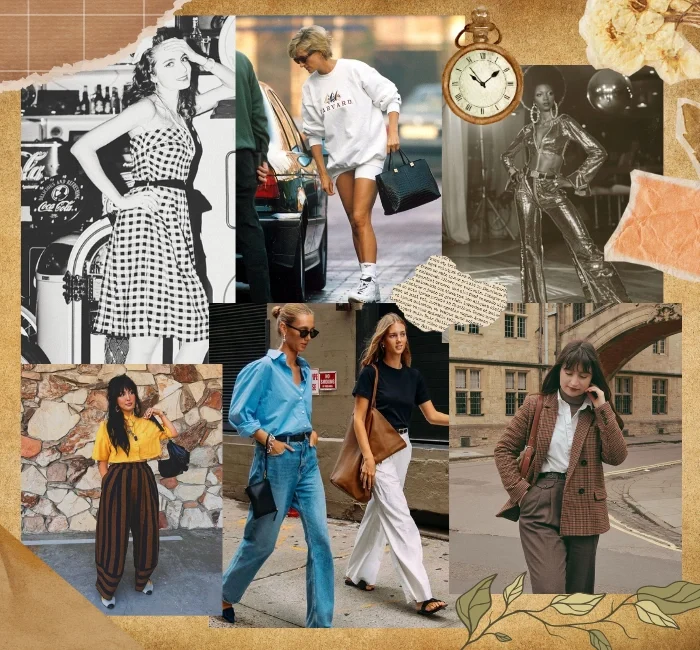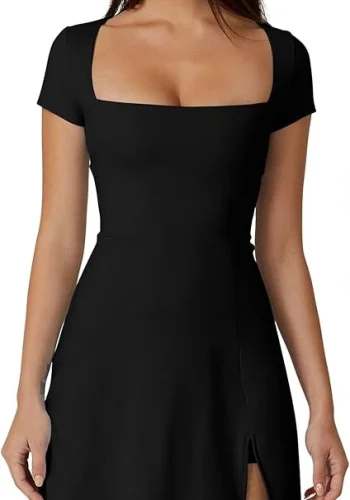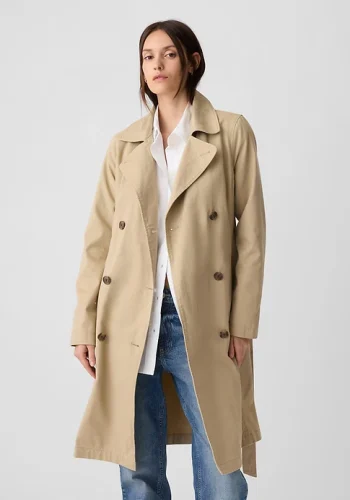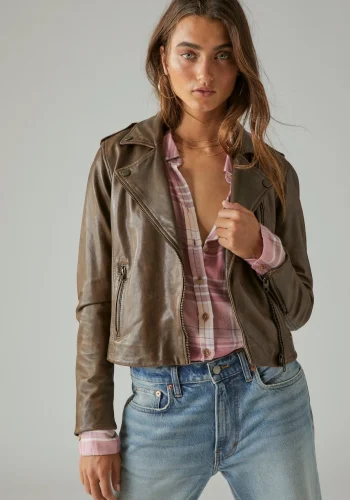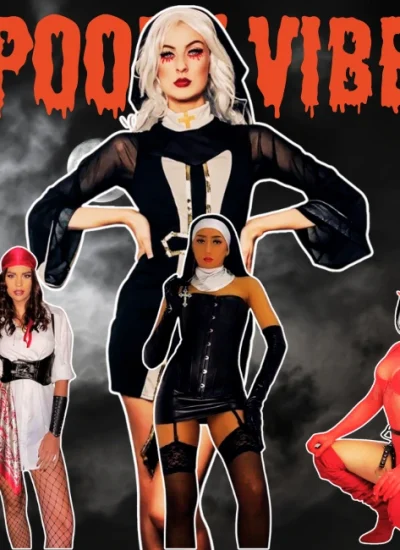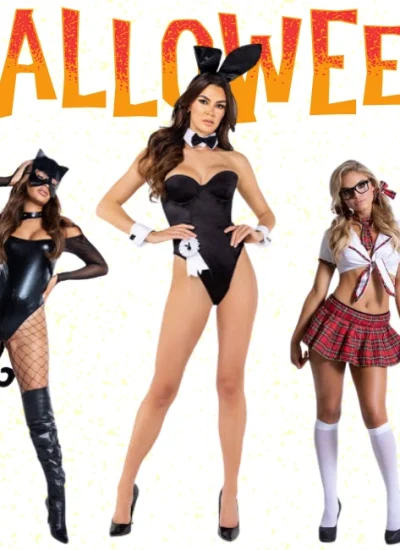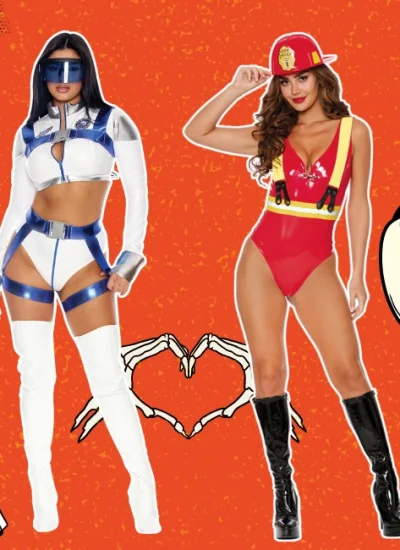Fashion is more than just the clothes we wear. It’s an ever-evolving canvas that reflects our personality, mood, and the world around us through various clothing aesthetics.
From the chic streets of Paris to the eclectic vibes of Tokyo, fashion is a global language that speaks to each of us in a unique way.
Whether you’re a trendsetter always on the lookout for the next big thing or someone who loves to blend timeless pieces with modern flair, understanding the nuances of different fashion styles is your gateway to expressing who you are.
For instance, if you’re drawn to the charm of the past, explore our guide on Vintage Style Clothing: Where to Buy and How to Wear.
Or, if you prefer the elegance that stands the test of time, check out What Is Classic Style Clothing That Stands the Test of Time?
Ready to dive into the vibrant world of fashion trends and discover how you can make each look your own?
Dress with style and purpose, making every outfit a statement and every accessory part of your story.
The Evolution of Fashion Styles

Fashion is a dynamic and ever-evolving force that mirrors the changing times, societal norms, and cultural influences.
From ancient civilizations to modern-day trends, fashion styles have been continuously shaped by a variety of factors, including geography, social movements, technological advancements, and the arts.
Ancient Times to the Renaissance

credit: romawonder
In ancient civilizations such as Egypt, Greece, and Rome, fashion was heavily influenced by climate, geography, and available materials. The hot climate of Egypt led to the popularity of lightweight linens, while in Greece and Rome, draped garments like togas were favored, reflecting their cultural emphasis on art and sculpture.
The Renaissance period marked a significant shift, with fashion becoming more structured and elaborate. The garments of this era reflected the social status and wealth of the wearer, with intricate designs and luxurious fabrics becoming a symbol of power and prestige. These periods showcased different styles, each representing the unique cultural and social dynamics of their time.
The Industrial Revolution

The advent of the Industrial Revolution brought about significant changes in fashion. Mass production made clothing more accessible, breaking down the barriers between social classes.
This era marked the beginning of ready-to-wear fashion, which democratized style and made fashionable clothing available to the growing middle class.
The 19th century saw the rise of tailored suits for men and corseted dresses for women, which became the standard of the time. This period also encouraged experimentation with different styles, allowing individuals to blend and mix aesthetics to create unique personal wardrobes that reflected their identities.
20th Century to Present Day

The 20th century was a period of rapid change in fashion, driven by social movements and technological innovations. The flapper dresses of the 1920s symbolized the liberation of women, while the punk style of the 1970s was a rebellious response to the establishment.
Today, fashion is more diverse than ever, with styles ranging from minimalist to avant-garde, influenced by global cultures and the digital age.
The rise of fast fashion and the influence of social media have further accelerated the evolution of fashion, making trends more fleeting yet accessible to a global audience.
The Influence of Culture

Fashion is often a direct reflection of cultural identity.
For instance, Japanese street style is renowned for its eclectic mix of traditional and modern elements, blending influences from anime, pop culture, and Western fashion to create unique and avant-garde looks.
Similarly, African fashion is characterized by vibrant colors and bold patterns, often drawing on the rich cultural heritage and traditions of various regions.
These styles not only showcase the creativity of different cultures but also provide a platform for cultural expression and pride, highlighting the diverse clothing options that reflect individual personalities and cultural influences.
Geographical Influence
The climate and geography of a region play a crucial role in shaping fashion styles. Coastal regions, for example, might favor lighter fabrics and more relaxed styles, such as the Coastal Grandmother aesthetic, which emphasizes comfort and natural colors.
In contrast, colder regions might inspire more layered looks, with heavier fabrics like wool and leather becoming staples. The geographical influence on fashion ensures that clothing is not only stylish but also functional, catering to the needs of the environment and reflecting diverse clothing options.
Social Movements

Throughout history, fashion has been a powerful tool for expressing social and political messages. The hippie movement of the 1960s, with its emphasis on peace, love, and freedom, popularized bohemian styles that continue to inspire modern fashion.
Similarly, the punk movement of the 1970s, with its DIY ethic and anti-establishment stance, gave rise to grunge and edgy styles that are still prevalent today.
In recent years, movements like Black Lives Matter have influenced fashion, with a renewed focus on Black designers and African-inspired aesthetics, highlighting the intersection of fashion and social justice.
The evolution of fashion styles is a testament to the creativity and adaptability of human expression. As we move forward, fashion will continue to evolve, reflecting the changing world and the diverse voices that shape it.
Whether through the lens of cultural heritage, geographical necessity, or social change, fashion remains a powerful medium for storytelling and self-expression, showcasing the fluidity and creativity of clothing aesthetics.
Casual Style

@cahierdetendances
Casual fashion is the foundation of everyday wear, effortlessly blending comfort with style. It’s the go-to choice for those who prioritize ease without compromising on a trendy appearance.
Casual style is all about versatility and making fashion feel natural, reflecting a laid-back yet chic vibe.
Whether you’re heading out for a casual brunch or running errands, casual fashion is the perfect way to stay comfortable while looking stylish by experimenting with different styles.
Key Elements of Casual Style
Comfort is King: The essence of casual style lies in comfort. Fabrics like cotton, denim, and jersey are staples, offering breathability and flexibility for all-day wear. Whether it’s a relaxed fit or a soft-touch fabric, casual fashion ensures you feel good in what you wear.
Versatility Meets Style: Casual fashion is incredibly versatile, seamlessly blending with various other styles. Pair a graphic tee with skinny jeans or layer a leather jacket over a simple dress—casual wear offers endless possibilities for mixing and matching.
Minimalist Aesthetic: Casual style often embraces minimalism. It’s about achieving that effortlessly cool look without over-accessorizing or overcomplicating the outfit. The goal is to look stylish without trying too hard.
Wardrobe Staples of Casual Style
Graphic Tees: Graphic tees are the heart of casual fashion, adding a pop of personality to any outfit. Whether it’s a band logo, a quirky quote, or a minimalist design, graphic tees are the ultimate expression of your unique style. Pair them with ripped jeans for a laid-back vibe or tuck them into high-waisted jeans for a more polished appearance.
Ripped Jeans: Ripped jeans add an edge to casual style, embodying a carefree, rebellious attitude. These jeans are versatile enough to be dressed up with a blazer or kept casual with a tee. The beauty of ripped jeans lies in their ability to make even the simplest outfit stand out.
Boat Shoes: Originally designed for sailors, boat shoes have become a casual wardrobe essential. They’re the perfect blend of comfort and style, pairing well with both shorts and jeans for a polished yet relaxed look. Whether you’re on the boardwalk or in the city, boat shoes add a touch of preppy elegance to any casual outfit.
Elevating Casual Style
Casual fashion doesn’t have to mean basic. By incorporating a few key pieces, you can elevate your casual wardrobe to something truly stylish and unique.
Polo Shirts: Polo shirts are a great way to add a touch of sophistication to casual outfits. They’re more structured than a t-shirt but still offer the comfort needed for a relaxed day out. Pairing a polo shirt with skinny jeans or chinos creates a look that’s both casual and refined.
Leather Jackets: A leather jacket is a versatile piece that can instantly elevate any casual outfit. It adds a layer of coolness and can be paired with anything from graphic tees to turtlenecks. The combination of a leather jacket with chunky boots is a timeless casual look that exudes confidence.
Chunky Boots: Chunky boots are not only practical but also a fashion statement. They work well with jeans, adding a rugged edge to your outfit. Whether you’re going for a grunge-inspired look or just want to add some attitude to your casual wear, chunky boots are the way to go.
By blending comfort with fashion-forward choices, casual style allows you to create outfits that are not only stylish but also uniquely yours. Whether you’re dressing down for a day of relaxation or looking to make a statement with a minimalistic outfit, casual fashion has you covered.
Business Casual Style

@lifewithjazz
In the dynamic world of fashion, business casual style has emerged as a versatile and adaptable dress code that effortlessly blends professionalism with personal flair.
This style strikes the perfect balance between looking polished for the office while allowing for a touch of individuality that reflects your unique taste.
What is Business Casual?
Business casual is a dress code that offers a middle ground between formal business attire and more relaxed, casual wear. It’s all about wearing clothes that are well-fitted, maintain a neat and professional appearance, and offer comfort without sacrificing style. The essence of professional casual lies in its ability to present a polished image without the rigidity of a full suit and tie.
Polo shirts are a quintessential piece in the polished wardrobe. They provide a smart-casual vibe that works well in most professional settings. Pairing a polo shirt with chinos or fitted trousers creates a look that is both comfortable and office-appropriate.
On cooler days or for more formal meetings, adding a blazer can enhance the outfit while keeping it within professional casual.
Key Pieces for Business Casual
Polo Shirts: A staple in any business professional wardrobe, polo shirts offer versatility and ease of pairing with trousers or chinos. Opt for neutral colors like navy, black, or white for a clean and professional appearance.
Fitted Clothes: The fit of your clothing is crucial in achieving the business fit look. Whether it’s a tailored pair of trousers or a well-fitted blouse, the goal is to avoid anything too tight or too loose. The right fit ensures you look polished and professional.
Blazers: A well-cut blazer can instantly elevate your outfit, making it suitable for formal occasions while still maintaining a relaxed feel for everyday office wear. Classic colors like black, gray, or navy offer maximum versatility.
Chinos: A great alternative to jeans, chinos provide a slightly more polished appearance. When paired with a polo shirt or button-down, they contribute to a smart-casual look that works seamlessly in and out of the office.
Incorporating these key pieces into your wardrobe allows you to master the business style, ensuring that you are always dressed appropriately for any professional setting while still expressing your personal style. Experimenting with a range of styles within the business fit framework can help you create a unique and versatile wardrobe that reflects your individuality.
Street Style

@thestreetvibe
Street style has surged as a dynamic and eclectic trend, becoming a powerhouse in the fashion industry by seamlessly blending personal expression with diverse cultural influences.
Emerging from urban landscapes, street fashion captures the creativity and individuality of everyday life, transforming it into a global movement. It’s more than just a fashion choice. It’s a lifestyle that resonates deeply with youth culture and trendsetters worldwide.
In iconic fashion hubs like Tokyo’s Harajuku district, Japanese street style has gained international acclaim, known for its fearless mix of traditional Japanese elements and Western fashion, creating avant-garde and playful ensembles.
The power of social media has further elevated street style, turning it into a mainstream phenomenon where influencers and fashion enthusiasts proudly showcase their unique looks. These often combine high fashion with everyday wear, embodying the spirit of innovation and accessibility that defines street fashion.
Key Pieces in Street Style
Street style is all about merging comfort with creativity, resulting in outfits that are as functional as they are stylish. The core components of this style often include chunky boots, oversized sweaters, and graphic tees wardrobe staples that embody versatility and effortless cool.
Chunky Boots: Essential to any streetwear wardrobe, chunky boots bring a tough, edgy vibe to any outfit. Whether paired with skinny jeans or a flowy skirt, they add both style and durability, making them perfect for navigating the urban jungle.
Oversized Sweaters: A cornerstone of street style, oversized sweaters are both cozy and stylish. They offer endless versatility, whether layered over a graphic tee or paired with bike shorts for a relaxed, chic look. The oversized fit exudes a laid-back attitude, making it a beloved choice in street fashion.
Graphic Tees: No street style ensemble is complete without a bold graphic tee. These tees, often adorned with striking prints, logos, or artwork, allow wearers to showcase their personality. Whether styled under a leather jacket or tucked into high-waisted jeans, graphic tees add a playful, individualized touch to any outfit.
Street style is ever-evolving, drawing inspiration from music, art, and the shifting cultural landscape. It’s a fashion genre that celebrates individuality and creativity, making it one of the most exciting and inclusive styles in the fashion world.
Vintage and Retro Styles

@natkaiserman
Vintage and retro styles offer a captivating exploration into the most iconic fashion eras, reviving trends that have defined the past while continuing to influence the present.
These styles are known for their distinctive silhouettes, bold patterns, and unique accessories that speak to the timeless allure of fashion history.
Embracing vintage fashion is about celebrating the craftsmanship, uniqueness, and enduring appeal of clothing that transcends fleeting trends, while experimenting with multiple styles to create a personal wardrobe that reflects individual identity.
The Essence of Vintage and Retro Styles
Vintage style typically refers to clothing that is at least 20 years old, often representing the height of fashion from previous decades.
Retro style, on the other hand, refers to new clothing that emulates the designs and aesthetics of earlier periods. Both styles have garnered a dedicated following among fashion enthusiasts who appreciate the blend of nostalgia and individuality they offer.
Whether it’s the glamour of the 1920s flapper dresses or the boldness of 1970s disco fashion, they allow you to create a personalized look that pays homage to the past.
Popular Eras in Vintage and Retro Fashion
1. 1920s (Flapper Style)

The 1920s was a groundbreaking era for fashion, particularly for women. The flapper style emerged as a symbol of the newfound freedom and rebellious spirit of the time.
Characterized by knee-length dresses with dropped waistlines and a relaxed fit, flapper fashion broke away from the restrictive styles of the previous decades.
Key elements included fringe, sequins, and beads, which added movement and sparkle to the dresses, making them perfect for dancing. Accessories such as cloche hats, long pearl necklaces, and T-strap heels completed the quintessential flapper look, embodying the Jazz Age’s exuberance.
2. 1950s (Rockabilly Style)

The 1950s brought the rise of the Rockabilly style, blending the energy of rock ‘n’ roll with classic Americana fashion.
This era celebrated the hourglass figure for women, with cinched waists and full skirts, often adorned with polka dots or gingham prints. Pin-up dresses, leather jackets, and rolled-up jeans became fashion staples.
Men embraced the rebellious image with greased-back hair, leather jackets, and slim-cut jeans. The Rockabilly style is still popular today, loved for its playful yet edgy aesthetic that channels the spirit of 1950s rock and rebellion.
3. 1970s (Disco Style)

The 1970s was the decade of disco, a time when fashion was all about making a statement on the dance floor.
Disco style was characterized by bold, shiny, and flamboyant clothing. Bell-bottoms, platform shoes, and metallic fabrics were the order of the day, reflecting the era’s love for glamour and extravagance. Sequins, vibrant colors, and daring cuts like plunging necklines and high slits were key elements of disco fashion.
This era’s style was about standing out, making it one of the most memorable and influential periods in fashion history.
Embracing Vintage and Retro Styles Today

To embrace vintage and retro fashion, focus on integrating key pieces from these iconic eras into your wardrobe. Whether you’re shopping at vintage shops or incorporating modern reproductions, the goal is to create a look that feels both nostalgic and contemporary. Mixing vintage pieces with modern clothing is a great way to keep your style fresh and relevant while honoring the fashion of the past.
Styling Tips:
Flapper Glamour: Pair a fringe dress with dainty jewelry and a sleek bob hairstyle for a modern take on 1920s glamour.
Rockabilly Chic: Combine a pin-up dress with leather accessories and red lipstick for a look that’s both playful and bold.
Disco Diva: Opt for a sequined top with high-waisted jeans and platform shoes to channel the vibrant energy of the 1970s.
By understanding and incorporating these vintage and retro elements into your wardrobe, you can create a unique style that reflects both your personal taste and a love for fashion history. Whether you’re drawn to the flapper’s elegance, the Rockabilly’s edge, or the disco’s flamboyance, these fashion styles offer endless opportunities to express yourself through fashion.
Classic Style: Timeless Fashion

@rebekabarath
Classic style embodies the essence of timeless elegance, blending sophistication with an understated sense of luxury. This fashion approach is not swayed by fleeting trends instead, it offers a consistent, polished look that remains in vogue year after year.
The heart of classic style lies in its simplicity, clean lines, and use of high-quality materials, making it a favorite for those who value enduring elegance.
What Makes a Style "Classic"?
A style is considered “classic” due to its enduring appeal and versatility. Unlike trends that come and go, classic fashion elements maintain their relevance across decades.
This style emphasizes quality, fit, and subtlety, steering clear of overly trendy or flashy elements in favor of a refined and elegant aesthetic. Classic fashion staples often include neutral colors, minimalist designs, and perfectly tailored fits, ensuring that the wearer always looks polished and put together.
Classic style is closely tied to iconic fashion pieces that have stood the test of time. These pieces, while often inspired by historical fashion, are reimagined to suit modern tastes. The adaptability of classic pieces allows them to be mixed and matched with current trends, making this style incredibly versatile.
Key Pieces in Classic Fashion
1. Little Black Dress (LBD)
The Little Black Dress is perhaps the most iconic piece in a classic wardrobe. Its versatility makes it suitable for nearly any occasion, from casual dinners to formal events. The LBD is simple yet elegant, offering endless possibilities for accessorizing and personalizing. Whether paired with pearls for a timeless look or bold jewelry for a contemporary twist, the Little Black Dress remains a staple of classic fashion.
2. Trench Coat
A trench coat is another essential item in classic fashion, known for its practicality and style. Originally designed for military use, the trench coat has evolved into a symbol of sophistication. Its clean lines and neutral colors make it a versatile piece that can be worn over anything from business attire to casual jeans. The trench coat’s timeless appeal lies in its ability to add a polished finish to any outfit.
3. Leather Jacket
The leather jacket adds a touch of edge to classic style, offering a balance between sophistication and ruggedness. It’s a versatile piece that can be dressed up or down, making it a favorite among fashion enthusiasts. A high-quality leather jacket, when paired with other classic pieces like a white shirt or tailored trousers, creates a chic and effortless look.
Embracing Classic Fashion
To embrace classic style, focus on building a wardrobe with high-quality, versatile pieces that can be mixed and matched to create a variety of looks. Invest in items that are timeless and can be worn for years to come, rather than following short-lived trends.
Classic style is about making thoughtful choices that reflect a refined and elegant aesthetic, ensuring that you always look polished and sophisticated.
Whether you’re new to classic fashion or looking to refine your existing wardrobe, these key pieces and principles will help you create a timeless, elegant look that never goes out of style.
Modern Trends: Light Academia and Dark Academia

@danielapardor , @sarahmantelin
In the dynamic world of fashion, few trends have captured the imagination quite like Light Academia and Dark Academia. These aesthetic movements are more than just clothing styles.
They represent a cultural shift toward embracing intellectualism, literature, and a nostalgic longing for the past, all wrapped in a sartorial elegance that’s both sophisticated and relatable.
Modern trends encourage experimentation with multiple styles, suggesting that one can blend and mix aesthetics to create a unique personal wardrobe that reflects their identity.
The Aesthetic Movements: Light Academia and Dark Academia
Light Academia and Dark Academia have emerged as influential cultural movements that celebrate the pursuit of knowledge, the beauty of classic literature, and the romanticism of scholarly life. These trends, popularized on platforms like Tumblr and Pinterest, appeal to young adults drawn to their intellectual and artistic vibes.
Light Academia

This style is characterized by its soft, warm tones and a light, romantic feel. Drawing inspiration from classical art, literature, and idyllic countryside life. Think Jane Austen novels, Light Academia exudes a sense of optimism and simplicity. The color palette includes earthy tones, whites, creams, and pastels, evoking a peaceful and intellectual aesthetic.
Dark Academia

On the flip side, Dark Academia embraces a more mysterious and gothic vibe. Inspired by Gothic literature and ancient academic institutions, this style features deep, rich tones like black, burgundy, and forest green.
It’s a look steeped in themes of melancholy, mystery, and intellectual curiosity, creating an atmosphere that is both enigmatic and alluring. These movements encourage experimentation with multiple styles, suggesting that one can blend and mix aesthetics to create a unique personal wardrobe that reflects their identity.
Styling Tips: How to Achieve These Looks
Creating the perfect Light Academia or Dark Academia look involves more than just picking out clothes; it’s about curating a lifestyle that reflects the themes and aesthetics of these movements.
Light Academia Styling
Clothing: Opt for light, flowing fabrics in neutral and pastel shades. Think white blouses, cream-colored trousers, and soft, knitted cardigans. Vintage-inspired pieces like pleated skirts, Peter Pan collars, and Mary Jane shoes add a nostalgic touch.
Accessories: Keep accessories minimal but meaningful. Delicate gold jewelry, leather-bound notebooks, and classic loafers complete the look. Consider adding sophistication with tortoiseshell glasses or a silk scarf.
Dark Academia Styling
Clothing: Dark Academia thrives on structure and formality. Key pieces include tailored blazers, turtlenecks, and woolen skirts or trousers. Layering is essential, think vests over shirts, blazers over turtlenecks, and long coats in deep, moody shades.
Accessories: Opt for items that exude a sense of history and intellect, such as pocket watches, leather satchels, and oxford shoes. Vintage jewelry and dark-rimmed glasses add an intellectual flair, perfect for this sophisticated aesthetic.
By understanding and embracing these trends, you can incorporate elements of Light Academia and Dark Academia into your wardrobe, crafting looks that are both timeless and fashion-forward.
Whether you’re drawn to the soft, romantic vibes of Light Academia or the brooding, intellectual allure of Dark Academia, these styles offer a unique way to express your personality and love for all things scholarly.
Boho and Earthy Styles

Boho and earthy styles are deeply rooted in a connection with nature and a love for free-spirited fashion. These styles are characterized by their relaxed and natural aesthetic, drawing inspiration from the world around us.
The essence of boho fashion lies in its ability to merge comfort with style, creating a look that feels effortless yet intentional.
Earthy tones and natural fabrics are central to this style, evoking a sense of harmony with the environment. Boho fashion often incorporates elements like delicate flowers and flowing silhouettes, which add to its romantic and whimsical appeal.
Boho and earthy styles are perfect for those who embrace individuality and enjoy experimenting with their wardrobe.
This fashion style allows for a mix-and-match approach, where different textures, patterns, and colors come together to create a cohesive look.
Whether you’re heading to a music festival, a beachside gathering, or simply want to infuse some laid-back vibes into your everyday attire, boho fashion offers a versatile and chic solution by blending multiple styles to reflect your unique personality.
Key Pieces
Maxi Dresses
A staple in boho fashion, maxi dresses embody the free-spirited nature of the style. These long, flowing dresses often feature earthy tones and natural fabrics, making them perfect for warm weather or layered with cozy knits during cooler months. Maxi dresses are versatile and can be dressed up or down, depending on the occasion. Pair them with delicate flowers in your hair for a truly bohemian look.
Tulle Skirts
While tulle skirts might seem more whimsical than earthy, they add a touch of femininity to boho outfits. The key is to choose tulle skirts in soft, muted colors that complement the natural tones typically found in boho wardrobes. Pair a tulle skirt with a simple white shirt or a fitted top to balance the volume of the skirt with a more streamlined silhouette.
Platform Shoes
Platform shoes are an excellent choice for those who want to add some height without sacrificing comfort. These shoes, often made from natural fabrics like cork or jute, fit seamlessly into the boho aesthetic.
They well with maxi dresses, tulle skirts, and even skinny jeans, adding a touch of modernity to a traditionally earthy style. Experimenting with a variety of styles can help you create a unique boho wardrobe that reflects your personal identity.
Edgy and Grunge Styles

Edgy and grunge fashion is all about breaking the mold and expressing individuality through bold, often unconventional, clothing choices.
This style is heavily influenced by the rebellious attitudes of the punk and alternative music scenes, especially from the 1990s. It’s a style that embraces imperfection and often exudes a rugged, carefree vibe. The essence of edgy and grunge fashion lies in its ability to defy traditional fashion norms while making a strong, personal statement by experimenting with many styles.
Key Characteristics
Grunge fashion is characterized by its laid-back, almost disheveled appearance, which is both intentional and effortless.
Edgy fashion, on the other hand, often incorporates elements of toughness and attitude, with a focus on dark colors, distressed materials, and bold accessories. Both styles are united by their rejection of polished, mainstream fashion in favor of something more authentic and raw.
Grunge
This style is synonymous with flannel shirts, ripped jeans, band tees, and chunky boots. It’s all about comfort and practicality, with a distinctly rebellious twist. Grunge fashion often incorporates layers, oversized silhouettes, and a mix of textures, such as pairing soft, worn-in cotton with tough leather or denim.
Edgy
Edgy fashion, while overlapping with grunge, tends to have a more polished but still rebellious edge. It often features leather jackets, fitted clothes, and statement accessories like chunky boots and oversized sunglasses.
The color palette is usually dark, with black being a dominant hue, but it can also include deep reds, dark purples, and metallics. Experimenting with a range of styles within these aesthetics can help create a unique personal wardrobe that reflects individual identity.
Key Pieces
To truly capture the spirit of edgy and grunge fashion, certain wardrobe staples are essential. These pieces are not only iconic but also versatile, allowing for endless combinations that express your unique style.
Leather Jackets
The leather jacket is a quintessential piece in both edgy and grunge fashion. It’s a symbol of rebellion and toughness, often worn over band tees or paired with ripped jeans. Whether it’s a classic black biker jacket or one adorned with studs and patches, a leather jacket instantly elevates any outfit to rockstar status.
Ripped Jeans
No grunge or edgy wardrobe is complete without a pair of ripped jeans. This staple item embodies the carefree, rebellious spirit of the style.
Whether they’re skinny, high-waisted, or boyfriend fit, ripped jeans add an element of attitude and nonchalance to any outfit. Pair them with a simple tee and chunky boots for an effortlessly cool look.
Band Tees
Band tees are a must-have for anyone looking to channel their inner grunge. These shirts, often emblazoned with logos and artwork from iconic rock bands, are a nod to the music that inspired the grunge movement. They’re usually oversized and worn with distressed jeans or layered under flannel shirts.
Experimenting with a range of styles within edgy and grunge fashion allows you to blend and mix aesthetics, creating a unique personal wardrobe that reflects your identity.
Styling Tips for Edgy and Grunge Fashion
When it comes to pulling off edgy and grunge fashion, the key is to mix and match pieces that reflect your personal style while staying true to the rebellious nature of the look. Don’t be afraid to experiment with different textures, layers, and accessories to create a look that’s uniquely yours.
Layering: Layering is crucial in grunge fashion. Try pairing a band tee with a flannel shirt and a leather jacket for a textured, layered look. Add some ripped jeans and chunky boots to complete the outfit.
Mix Textures: Combine different materials like leather, denim, and cotton to add depth to your look. A leather jacket over a soft, oversized tee paired with ripped jeans creates a perfect balance of tough and casual.
Accessorize with Attitude: Finish off your look with bold accessories like oversized sunglasses, chunky boots, or statement jewelry. These elements add an extra layer of edge to your outfit and help to express your individual style.
Edgy and grunge fashion is more than just a style. It’s a way of expressing your personality and embracing the freedom to dress how you want, regardless of the rules.
By incorporating key pieces like leather jackets, ripped jeans, and band tees, you can create a look that’s both fashionable and uniquely you.
Whether you’re drawn to the relaxed vibe of grunge or the bold statements of edgy fashion, this style is all about making a statement and standing out from the crowd. Experimenting with diverse styles allows you to blend and mix aesthetics, creating a unique personal wardrobe that reflects your identity.
Athletic and Athleisure Styles

@_thehealthystate
In recent years, the line between athletic wear and casual everyday fashion has blurred, giving rise to the trend known as athleisure. This style combines the functionality and comfort of athletic clothing with the aesthetics of casual fashion, making it both practical and stylish for various occasions.
Athleisure has become more than just a trend; it’s a lifestyle. People are embracing it for its versatility.
Whether you’re heading to the gym, running errands, or even going out for a casual brunch, athleisure ensures you look effortlessly chic while staying comfortable.
The evolution of athleisure reflects a broader shift towards prioritizing comfort without sacrificing style, a sentiment echoed across fashion runways and streetwear alike.
This trend also encourages experimentation with diverse styles, allowing individuals to blend athletic and casual aesthetics to create a unique personal wardrobe.
Key Pieces in Athleisure
Athletic Wear
The athleisure wardrobe is built around a few key pieces that have become staples in modern fashion. Athletic wear like leggings, bike shorts, and performance tops form the foundation of this style. These pieces are often made from technical fabrics that wick away moisture, offer stretch and support, and keep you comfortable throughout the day.
Biker Shorts
Bike shorts have particularly surged in popularity, thanks to their retro appeal and the influence of 90s fashion. They can be paired with oversized sweaters, crop tops, or even blazers for a chic, on-trend look that blends sporty with sophisticated.
Snaeakers
Additionally, sneakers play a crucial role in the athleisure aesthetic. The right pair of sneakers can tie an outfit together, offering both comfort and a statement-making element.
From chunky dad sneakers to sleek, minimalist designs, sneakers are versatile enough to be worn with almost any athleisure ensemble, allowing for experimentation with diverse styles.
Styling Tips
Incorporating athleisure into your everyday wardrobe is easier than you might think. Start by mixing and matching athletic pieces with more traditional clothing items.
For example, pairing a sports bra or a fitted crop top with high-waisted jeans creates a balanced look that’s both sporty and stylish.
Layering is also key in athleisure styling. Throw on a leather jacket over your leggings and tee for an edgy twist, or add a long coat over your bike shorts and hoodie for a high-fashion vibe. The beauty of athleisure lies in its adaptability you can dress it up or down depending on the occasion.
Accessories can also elevate your athleisure outfits. Consider adding a sleek crossbody bag, a statement watch, or oversized sunglasses to enhance your look.
The goal is to blend functionality with style seamlessly, creating outfits that work as well on the streets as they do in the gym. Experiment with unique styles to find the perfect balance that reflects your unique personality.
Personal Style Development
Personal style is an expression of individuality, a unique blend of preferences that reflects who you are. It goes beyond following trends. It’s about curating a look that feels authentically you. Discovering your personal style is a journey, one that requires experimentation and self-reflection.
To start, consider what elements of fashion resonate with you.
Are you drawn to the boldness of street style, the elegance of classic fashion, or the comfort of casual wear?
Understanding your inclinations helps in shaping your distinctive style.
For instance, if you find yourself gravitating towards “casual style,” incorporating key pieces like “polo shirts” and “skinny jeans” can be a great starting point.
Building a Wardrobe
Once you have a clearer sense of your style, it’s time to build a wardrobe that reflects it. Start with the essentials, versatile pieces that can be mixed and matched to create various outfits. For example, a well-fitted “white shirt” or “leather jackets” can serve as foundational pieces in many different looks.
Incorporate items that not only match your personal style but also fit well and make you feel confident. It’s not just about owning clothes. It’s about “wearing clothes” that resonate with your personality.
Over time, you’ll curate a wardrobe that not only suits your lifestyle but also evolves with your style journey.
Conclusion
Fashion is a journey of self-expression, where every style choice becomes a reflection of who you are and how you view the world.
From timeless classics that never go out of style to the latest trends that push the boundaries of creativity, fashion offers endless possibilities to explore and reinvent your look.
Whether you gravitate towards the laid-back vibes of casual wear, the sophistication of business casual, or the bold statements of street style, your wardrobe is a personal canvas, ready to tell your unique story.
As you navigate through these fashion styles, remember that the best look is one that makes you feel confident and true to yourself.
So, embrace your individuality, experiment with new trends, and let your style be a vibrant, ever-evolving expression of you, reflecting the diverse clothing options that inspire your creativity.
